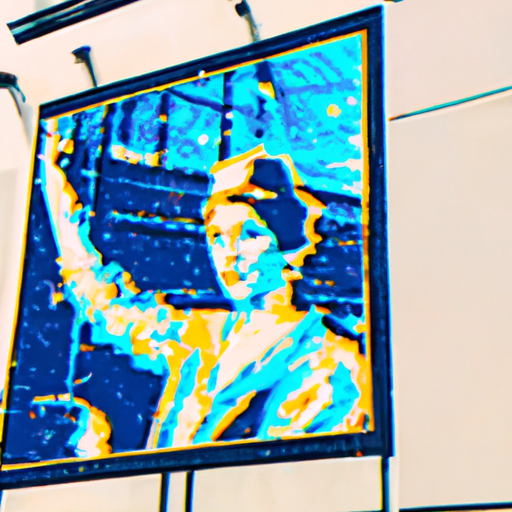
-
Table of Contents
- Urban Art and Street Murals: Bringing the City to Life
- The Rise of Urban Art
- The Impact of Street Murals on Cities
- 1. Beautification and Revitalization
- 2. Cultural Representation and Identity
- 3. Tourism and Economic Growth
- 4. Social Engagement and Community Building
- The Artists Behind the Murals
- 1. Banksy
- 2. Shepard Fairey
- 3. Swoon
- Conclusion
Urban Art and Street Murals: Bringing the City to Life

Urban art and street murals have become an integral part of the modern cityscape, transforming once dull and lifeless walls into vibrant and captivating works of art. These artistic expressions not only beautify the urban environment but also serve as a powerful medium for social commentary, cultural representation, and community engagement. In this article, we will explore the significance of urban art and street murals, their impact on cities, and the artists behind these captivating creations.
The Rise of Urban Art
Urban art, also known as street art, emerged as a form of artistic expression in the late 20th century. Initially considered an act of vandalism, it has now gained recognition as a legitimate art form. The rise of urban art can be attributed to several factors:
- Rebellion and Counter-Culture: Urban art originated as a form of rebellion against the mainstream art world. Artists sought to break free from the confines of galleries and museums, taking their work to the streets where it could reach a wider audience.
- Political and Social Commentary: Street art has always been closely linked to political and social issues. Artists use their work to raise awareness, challenge the status quo, and give a voice to marginalized communities.
- Accessibility and Inclusivity: Unlike traditional art forms, urban art is accessible to everyone. It breaks down barriers and brings art directly to the people, regardless of their socioeconomic background or education.
The Impact of Street Murals on Cities
Street murals have a profound impact on the cities they inhabit. They not only transform the physical appearance of buildings and neighborhoods but also contribute to the social and economic development of urban areas. Here are some key ways in which street murals bring cities to life:
1. Beautification and Revitalization
One of the most obvious benefits of street murals is their ability to beautify and revitalize urban spaces. Dull and neglected walls are transformed into vibrant and visually appealing works of art, creating a more pleasant and engaging environment for residents and visitors alike. This revitalization can have a ripple effect, attracting more people to the area and boosting local businesses.
2. Cultural Representation and Identity
Street murals often reflect the cultural heritage and identity of a city or neighborhood. They serve as visual representations of the local community’s history, traditions, and values. By incorporating elements of local culture into their work, artists create a sense of pride and belonging among residents, fostering a stronger community spirit.
3. Tourism and Economic Growth
Street murals have the power to attract tourists and boost local economies. Cities with a vibrant street art scene often become popular destinations for art enthusiasts and travelers seeking unique experiences. This influx of visitors can lead to increased tourism revenue, job creation, and the growth of small businesses such as art galleries, cafes, and souvenir shops.
4. Social Engagement and Community Building
Street murals have the ability to bring people together and foster a sense of community. They create opportunities for interaction and dialogue, encouraging residents to engage with their surroundings and with one another. Community-led mural projects, where local residents actively participate in the creation process, strengthen social bonds and empower communities to take ownership of their public spaces.
The Artists Behind the Murals
Street art is a diverse and dynamic art form, with artists from all walks of life contributing to the urban landscape. These artists often work anonymously, using pseudonyms or tags to maintain their anonymity and avoid legal repercussions. Here are some notable street artists who have made a significant impact on the world of urban art:
1. Banksy
Banksy is perhaps the most famous street artist in the world. Known for his politically charged and thought-provoking stenciled works, Banksy’s art has appeared on walls in cities across the globe. His anonymity and subversive style have made him a symbol of rebellion and artistic freedom.
2. Shepard Fairey
Shepard Fairey gained international recognition for his iconic “Hope” poster featuring Barack Obama during the 2008 presidential campaign. His work often combines elements of street art, pop culture, and political activism. Fairey’s murals can be found in cities worldwide, conveying powerful messages of social justice and equality.
3. Swoon
Swoon, also known as Caledonia Curry, is a pioneering female street artist known for her intricate and large-scale wheatpaste installations. Her work often focuses on themes of human connection, community, and environmental sustainability. Swoon’s murals can be found in both urban and rural settings, blurring the boundaries between street art and public art.
Conclusion
Urban art and street murals have become an integral part of the modern cityscape, bringing life, color, and meaning to urban environments. They go beyond mere aesthetics, serving as powerful tools for social commentary, cultural representation, and community engagement. Street murals beautify and revitalize cities, attract tourists, and foster economic growth. They also create a sense of identity and belonging among residents, strengthening social bonds and empowering communities. The artists behind these murals, often working anonymously, challenge the status quo and use their art to make a difference in the world. As urban art continues to evolve and gain recognition, it will undoubtedly play an even greater role in shaping the cities of the future.
